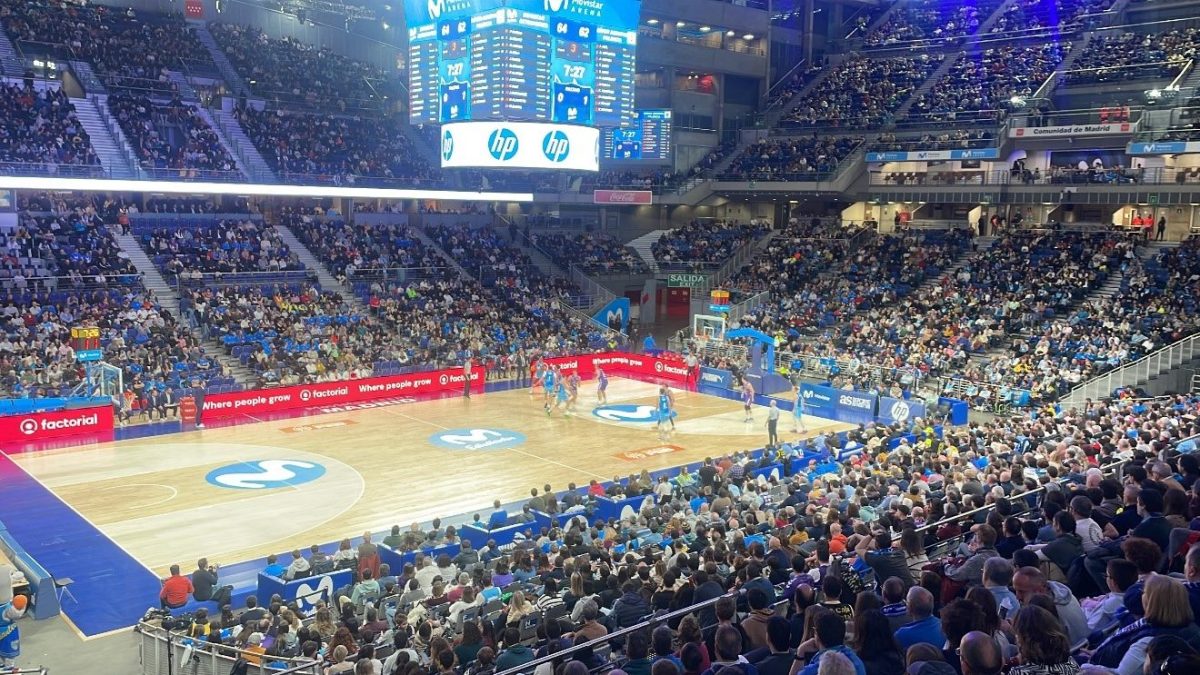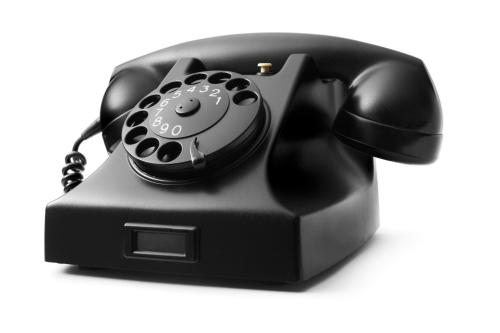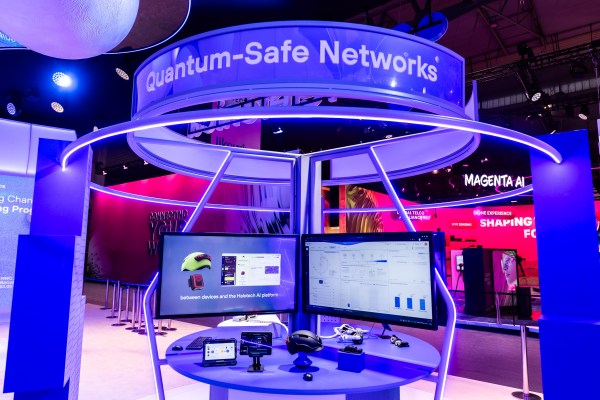The trial, promoted by the open lab for innovation in 5G technologies, 5TONIC, of which Telefónica is a founding member, has involved the participation of Ericsson, the Carlos III University of Madrid, Telefónica, as well as YBVR and Prosegur Security. The tests are also part of the European TrialsNet project with the aim of large-scale testing of advanced 5G applications in areas such as security, transport, tourism and entertainment and in real and highly complex environments.
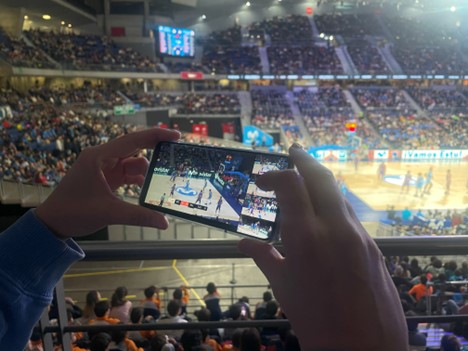
Testing the evolution of 5G technology in real environments
The tests were carried out during the two basketball games played on the day. During the basketball game between Movistar Estudiantes and Súper Agropal Palencia, YBVR deployed 180º and 360º video cameras on the indoors basket court and, using Virtual Reality (VR) glasses and immersive video on mobile devices, ran two applications under the title ‘Immersive Fan Engagement’: the first for at-home use, taking the viewer to the front row of the game with (VR) and immersive video on smartphones; the second, live in the stadium, bringing the action to the audience regardless of their seat. The idea is to show two cases that enrich the user experience..
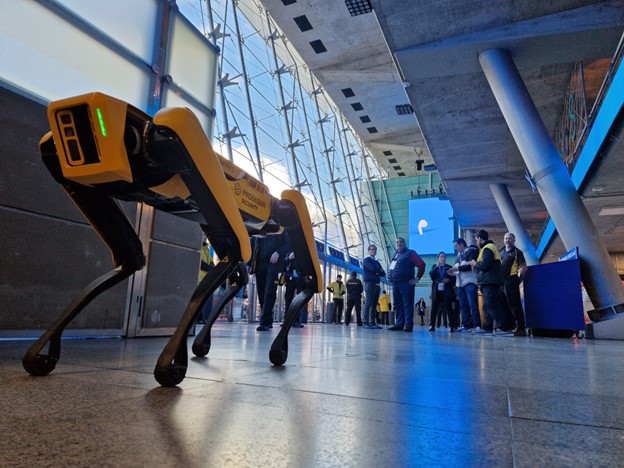
During the Real Madrid vs. Baskonia basketball game, held in the afternoon, Prosegur Security deployed surveillance devices including cameras, robots, and LiDAR sensors in one of the venue’s access areas. The use case called ‘Smart Crowd Monitoring’ showed how this technology can be used to build an environment of applications and infrastructure to test for and detect abnormal situations that compromise security during mass events. The goal is to improve security at large events by detecting crowds, violent activities, and suspicious objects, as well as optimising the coordination and efficiency of emergency teams in critical situations.
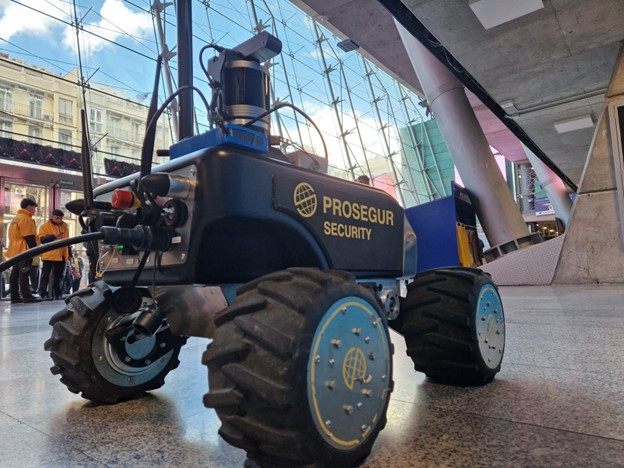
During the same match, UC3M deployed different portable devices (wristbands, mobile phones, laptops, etc.) in an access area to the stadium, to demonstrate the dual use case ‘Mass Casualty Incident (MCI) and Emergency Rescue in Populated Area’. This use case showed how first responders can be effectively coordinated in triage and intervention in the event of an incident with mass casualties or large-scale emergencies, as well as in the emergency evacuation process, while taking into account the pre-hospital care needed by the different victims.
The importance of the ecosystem in advancing technology
Understanding the potential impact of a future technology involves working through use cases and applications. That is why it is important to move forward together with the whole ecosystem, through open laboratories such as 5TONIC and with all the agents that will be able to provide technological pieces to solve different problems. This experience at the Movistar Arena is especially relevant because, through a test in a real and complex scenario, the technology and its usefulness are put to the test.
“Testing real applications in environments as special as the Movistar Arena allows us to understand the type of connectivity solutions and services that will be necessary in the medium term“, Cayetano Carbajo, president of 5TONIC and director of Core, Transport, Innovation and Ecosystem at Global CTIO, Telefónica.
In all three use cases, Ericsson Spain has been the enabler of the advanced 5G infrastructure, based on a 5G Standalone (SA) network operating in the 26 GHz millimetre wave band, using the spectrum assigned to Telefónica and a mobile network core hosted by 5TONIC. Using innovative software functionalities, mobile devices connect directly to SA millimetre wave 5G frequencies, without the need to use other 4G or 5G frequencies as an anchor.
The deployed technology delivers ultra-fast speeds and unprecedented minimum latencies, essential characteristics for applications in high-demand environments such as sporting events. The deployed 5G infrastructure consists of a portable private network easy to transport and capable of being assembled and dismantled in a single day, making it ideal for mass events. In addition, it features an Ericsson “Local Packet Gateway (LPG)”, which manages data traffic within the private network itself, providing additional advantages in security, privacy and latency.
To optimise performance and ensure the functioning of the use cases, three strategically located 5G antennas were installed. One antenna was located on the basketball court to connect the YBVR cameras, enabling the transmission of immersive experiences. The second antenna was located in the YBVR control room to manage the production equipment. And the third was placed in the access area to the venue, where Prosegur Security devices were responsible for guarantee the security of the event and UC3M devices were in charge of managing emergency situations.
In short, a deployment that ensures that each application works optimally, highlighting the potential of 5G SA technology in millimetre waves in real and complex environments.
More information: 5TONIC and Ericsson test 5G SA on millimetre waves at Movistar Arena – 5TONIC
